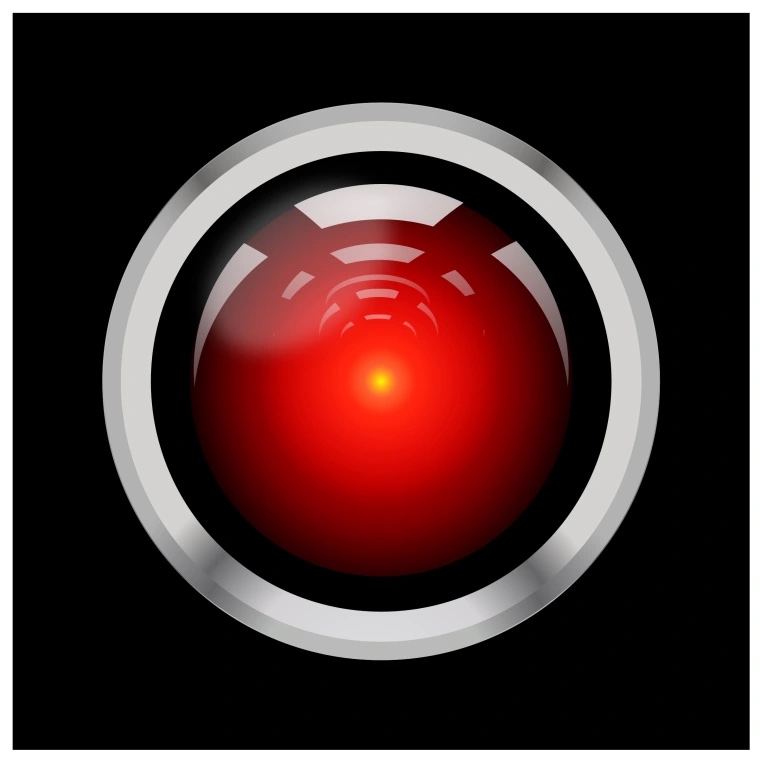When evaluating the Wachowkis’ science fiction 1999 blockbuster, The Matrix, narrative and subsequent tone of the film chooses to take the concept of Artificial Intelligence into its most ubiquitously ambiguous narrative, at least when it comes to the perception of the real-world. Fundamentally, the film predicates itself upon the notion that the real-world, materialistic earth that is presented to Neo in the beginning of the film, which beside its green filter seems to closely resemble early 21st-century America, fit with cubicles and all, is in actualité a fiction created by robotic artifical intelligence which made the fable of humanity creating a machine which can out-do itself, literal. However, while films previously discussed in the semester examine this concept from a one-world perspective where the space in the film is the actual space that the world of the film exists in, the Wachowskis’ chose to take this convention and flip it. By this I mean that there is no illusion of the world inside the world being a fiction, a dream, a fake reality of the likes of Shutter Island (2010), it is with the Wachowski’s combination of the real-world versus a fake world not being a mentally inn-man but rather the creation of a vast AI system which has implanted itself in all humans, that makes the film timeless.
This combination is not only an anxiety inducing fear but one that permeates , and by its design, will continue to permeate throughout future discussions of artificial intelligence and films alike. A piece of media that bases itself upon the idea that computers hold the ability to create an illusion for the audience, make a fake world seem so real that practically all of humanity has been deceived into believing its reality, only works due to the nature of technological adaption and invention itself. The film by design feeds off the proven notion of technological progress being absolute and ever-doubling, Moore’s Law, a theory which has been proven countless times from products like telephones to heart monitors, and hence inherently verifies the anxieties the Wachowskis present. The special effects in The Matrix have undoubtedly found themselves lure to criticism due to the fact that they were created in 1999, 25 years ago at a time when computer processing and special effects CGI systems were not nearly at what they are today. However, it is not the special effects which derive meaning and substance in the film’s work, at least not upon any second viewing.
University of Minnesota professors Laura Bartlett and Thomas B Byers argue that the world presented in The Matrix is not unalike those in other apocalyptic worlds, whether it be Mad Max, The Walking Dead, etc., with a single word describing such eras which have been utilized throughout popular culture, usually in post-apocalyptic stages, as post-humanism. This post-humanism itself is defined of course as a time period when humanity is nearly extinct, almost always due to man-made global failures, ranging from nuclear war to the AI present in this course, however, it also defines the aspects which define humans in this bleak and hopeless period in the species’ existence. Fundamentally, post-humanism relies upon its approach to how humans function with one another and their inherent devolution into infighting and conflict amongst one another. However, all of these narratives have been presented as pieces of a plausible future for humanity, not what is occurring at the moment, by redefining this plausibility as a hidden reality in-present, at the moment in our wider society, regardless of a human’s birth, ethnicity, race, gender, creed, or will, the inherent plausibility of post-humanism becomes an absolute reality, one that is predicated on the world acting as seemingly normal. Thus the Wachowski’s redefine the post-apocolyptic genre by making this version rely on the fact of the present being “normal”.
Bartlett, Laura, and Thomas B. Byers. “Back to the Future: The Humanist ‘Matrix.’” Cultural Critique, no. 53 (2003): 28–46. http://www.jstor.org/stable/1354623
Satariano, Adam. “E.U. Agrees on Landmark Artifical Intelligence Rules.” The New York Times. December 8th, 2023.

Leave a Reply